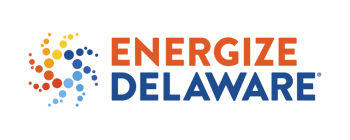As of Sunday, July 1, 2018, the Program implemented modifications, including an enhanced Program structure and measure mix for rebate incentives. Although the basis of the modifications is multifaceted, the primary vison of this Program remains: helping Delawareans save on their energy bills and improving the environment—and doing so by creating local sustainable jobs.
Reminder 1 – Efficiency Navigator Rebate Submission Links

Please note: An email was sent to all current Participating Contractors on Monday, July 2, 2018, with instructions on which link to use in Efficiency Navigator upon logging in to submit rebate applications. As a reminder, please use the 2018 Programs listed on the site and DO NOT use the “Legacy” Programs. Anything submitted for preapproval in the Legacy Programs will be rejected. The links need to remain active to process Legacy jobs in the queue, which brings us to the next reminder...
Reminder 2 - August 31 Deadline for Legacy Projects
By Friday, August 31, 2018 (11:59 p.m.), all Legacy projects must be completed and submitted in full (roughly 60 days rather than the traditional 90 days). “In full” means measures installed, test-out completed and full rebate submitted. Please note that if the project is a new gas connection, a waiver may be submitted. Please contact the Program team at DEGeneral@FranklinEnergy.com.
Reminder 3 – Program Eligibility
We recognize there was a lot of material covered during the Contractor training that was held in June. Below is a high-level overview of the more common items we’ve received questions about regarding Program/Participant Eligibility. These items can be found in the Contractor Operations Manual (COM), which is hosted here: http://www.deseuhp.org/participating-contractor-resources.
- The Program can serve a one- to four-unit residential property located in Delaware.
- Town houses and row homes are eligible for the Program.
- A town house is defined as a single-dwelling unit in a structure that extends from foundation to attic and has its own utility meters and HVAC/DHW system. There is no limit on how many row homes can be connected to one another.
- Second homes and vacation homes ARE ELIGIBLE (FY19 update).
- All assessments are good for four years from the completion of the assessment (FY19 update).
- During the four-year time frame, reentry for Participants to access rebate incentives is dependent on the amount or funding availability at the time of installation of the measure, and the project will be subject to any changes in the Program at the time of the reservation. No new assessment fees will be paid by the Program within this period, even in cases where a new Contractor proposes to do a new assessment.
- After four years, Participants will need to have a new assessment and be responsible for the full assessment fee at a market rate determined between the assessment company and Participant. Participants who receive a second assessment (following the four-year period) are not eligible for discounts on the assessment, nor Program-provided direct install measures.
- Additions to the structure and equipment to heat/cool the new space are not eligible for Program rebates. Any additional building footprint that would add square footage to the conditioned space that is not already heated/cooled would not qualify for the HPwES Program.
- All projects must follow BPI 1200 for Health/Safety Standards.
- All projects must follow ventilation requirements of the Program
- All projects with attics that have nominal 7 inches or less must be air sealed and insulated.
- Air sealing must accompany insulation even if not applying for an air-sealing rebate (unless the zonal pressure readings indicate air sealing is not necessary).
- HVAC equipment must be installed to provide conditioning (heating and/or cooling) in a space that is already conditioned (whether directly or indirectly) and within the thermal envelope. Areas that are outside the thermal envelope—and not already conditioned—are not permitted.
- The number of multi-split rebates available on a project are based on the number of condensers. (The energy-saving component is the compressor.)
- The number of smart-thermostat rebates available on a project are based on the number of systems, not the number of zones. Multiple zone systems will only qualify for one smart thermostat.

